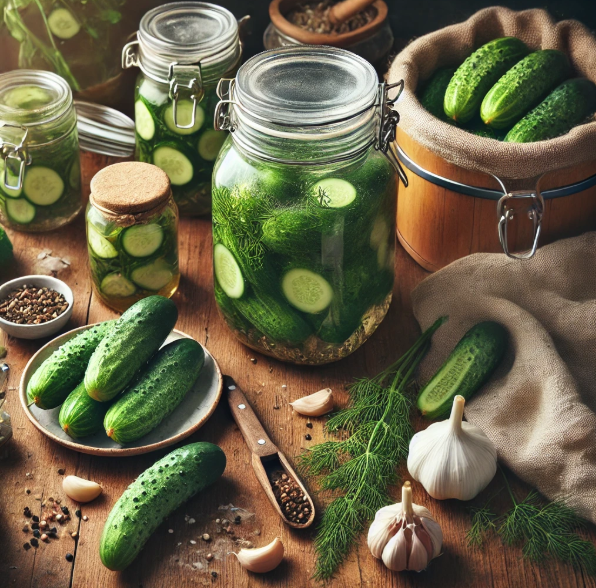
The Ultimate Guide to Pickling Cucumbers for Long-Term Storage
Share
Preserve Your Cucumbers Sustainably with Biotuff
Whether you’re harvesting a bumper crop from your garden or taking advantage of seasonal specials at your local market, pickling cucumbers is one of the easiest (and tastiest) ways to preserve them for months. But preserving doesn’t have to mean creating plastic waste. With Biotuff’s eco-friendly kitchen range, you can pickle, store, and enjoy cucumbers while keeping your environmental impact low.
Here’s how to pickle cucumbers for long-term storage — with sustainable tips along the way.
🥒 Step 1: Choosing the Right Cucumbers
For pickling, you want small, firm cucumbers — often called pickling cucumbers. These varieties hold their crunch better after brining and fit easily into jars. If you’re shopping at a farmers’ market, bring along your Biotuff Produce Bags to keep your cucumbers fresh without adding plastic waste.
🧂 Step 2: Gather Your Ingredients
You’ll need:
-
Fresh cucumbers (washed and dried)
-
Vinegar (white or apple cider vinegar works well)
-
Water
-
Salt (pickling or kosher salt – avoid iodised)
-
Sugar (optional)
-
Garlic cloves
-
Fresh dill
-
Whole peppercorns
-
Mustard seeds (optional)
For a zero-waste prep station, cover your countertop with Biotuff Compostable Cling Wrap to make cleanup easy — all while knowing the wrap is plant-based and compostable.
➡️ Shop Biotuff Compostable Cling Wrap
🫙 Step 3: Prep & Pack Your Jars
Sterilise your jars by boiling them for 10 minutes, then pack them tightly with whole cucumbers (for dill pickles) or sliced cucumbers (for sandwich pickles). Add your garlic, dill, peppercorns, and mustard seeds directly to the jar.
🧴 Step 4: Make the Brine
In a saucepan, combine:
-
1 cup vinegar
-
1 cup water
-
1 tbsp salt
-
1 tbsp sugar (optional)
Bring to a boil, then pour the hot brine into the jars, covering the cucumbers completely. Leave a small gap at the top.
🏷️ Step 5: Seal & Store
Wipe the jar rims clean, apply lids, and let the jars cool at room temperature. For fridge pickles, refrigerate for up to 2 months. For longer-term storage, process the jars in a water bath canner for 10 minutes to create a vacuum seal.
Once your pickles are ready to eat, store opened jars in the fridge. If you’re sharing pickles with friends or family, Biotuff’s Certified Compostable Freezer Bags are perfect for packing individual portions — keeping them fresh while reducing plastic waste.
♻️ Sustainable Tip: Use Biotuff for Garden-to-Jar Preservation
If you’re harvesting from your own garden, Biotuff bags are perfect for:
-
Storing fresh-picked cucumbers before pickling.
-
Freezing extra cucumbers you can’t pickle right away.
-
Keeping herbs like dill fresh in the fridge.
All Biotuff bags are Australian-certified compostable, meaning they break down completely in home compost systems — so every step of your pickling process can be as eco-friendly as possible.
🥒 Final Thoughts: Preserving Pickles, Preserving the Planet
Whether you’re a seasoned canner or trying your hand at pickling for the first time, every small sustainable choice matters. With Biotuff’s range of eco-friendly produce bags, freezer bags, and compostable cling wrap, you can enjoy the flavour of homemade pickles — while keeping your environmental footprint light.
➡️ Explore Biotuff’s Full Kitchen Range
🍴 Ready to Get Started?
Stock up on your pickling essentials — and your eco-friendly Biotuff products — for a greener, tastier preservation season.

We will only handle press inquiries. If you have questions regarding an order please contact our customer care. media@biotuff.com.au
In the spirit of reconciliation, Biotuff Australia acknowledges the Traditional Custodians of the country throughout Australia and their connections to land, sea and community.
We pay our respects to their elders past, present and emerging, and extend that respect to all Aboriginal and Torres Strait Islander peoples today and everyday.
